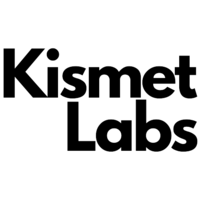In the world of social media and e-commerce, it seems like the brands, products, and services demanding our attention will go on forever. As UX writers, how do we cut through the noise and demonstrate value to our users?
To get noticed and truly connect with our users, we have to write in a way that shows them we’re not just worth attention in general but their attention.
One way we can do this is through framing.
Framing refers to how we present something. The way we frame something determines how others will perceive it.
For example, say we have a painting and we’re trying to pick out a (physical) frame for it. The shape of the frame — whether it’s a circle or a square, smaller or larger — will determine our view of the painting. If the frame is a particular color or material, these features will interact with the colors and materials in the painting, drawing our attention to certain details more than others.
We can apply the same idea to the way we write about products and services.
To catch the attention of users, marketing and copywriting practitioners employ framing strategies that transform product features into benefits that are valuable to the user.
On Day 2 of the Daily UX Writing Challenge, I got to do the same.
The Challenge asked participants to write a promotional screen for a sports app that boasts the following features:
- Team selection
- Game reminders
- Real-time score updates
- Highlight videos
Additionally, the challenge provided a user persona:
A working parent who’s also an avid sports fan. Unfortunately, it’s the middle of their favorite sports season and they can’t go to the games as they did before.
The sports app has great features that would relieve many of the user’s pain points. The challenge is showing the user the personal value that the app can bring to their life.
During the ideation phase, I expanded on possible pain points for the user and rewrote each feature in terms of their benefit.
Features → Benefits
Team selection — From the user profile, we know their time is short. They can’t weed through the stats and updates for every team. By being able to select which teams they want to follow, they’re able to prioritize the information that’s most important to them.
Game reminders — Working parents have enough to worry about remembering. With game reminders, they don’t have to waste any mental energy on what time the game starts and can focus on more important things.
Real-time score updates — The user’s attention is primarily going to be on their kids or work. Live updates make it easy to multi-task, there’s no need to be watching the game to be in the know.
Highlight Videos — Missing that big play or epic fail can result in serious FOMO or negatively impact a user’s participation in fantasy leagues or sports betting. Catching the highlights ensures the user is up to date and can fully participate in activities related to the game — allowing them to sustain their title as an avid sports fan.
Reframing each feature not only revealed the individual benefits but brought the benefits together to highlight the overall value of the app: it’s the next best thing to watching the game.
The Breakdown
Name: I named the app Sideline to highlight the overall benefit of the app as seen in the body copy: “It’s like you’re at the game.” Being on the sideline is the next best thing to playing in the game, likewise, the next best thing to watching the game is using the app.
Headline: “No time to watch the big game?” directly targets the user’s biggest pain point: their lack of time to watch the games that are important to them. “Don’t sweat it,” communicates that the user doesn’t have to worry about missing out.
Body: “With Sideline’s personalized highlights and live updates it’s like you’re at the game” creates value for the user by presenting Sideline’s features as the next best thing to being at/watching the game live. I further demonstrate the benefits by eliminating more pain points in “Never miss your team’s winning play or wonder what the score is again.” Users can trust that Sideline will provide them with the information they need to stay in the know.
When writing promotional copy, one way to connect with users and gain their attention is to demonstrate the value of our product or service’s features by reframing them as benefits that eliminate the user’s pain points.
Source link





